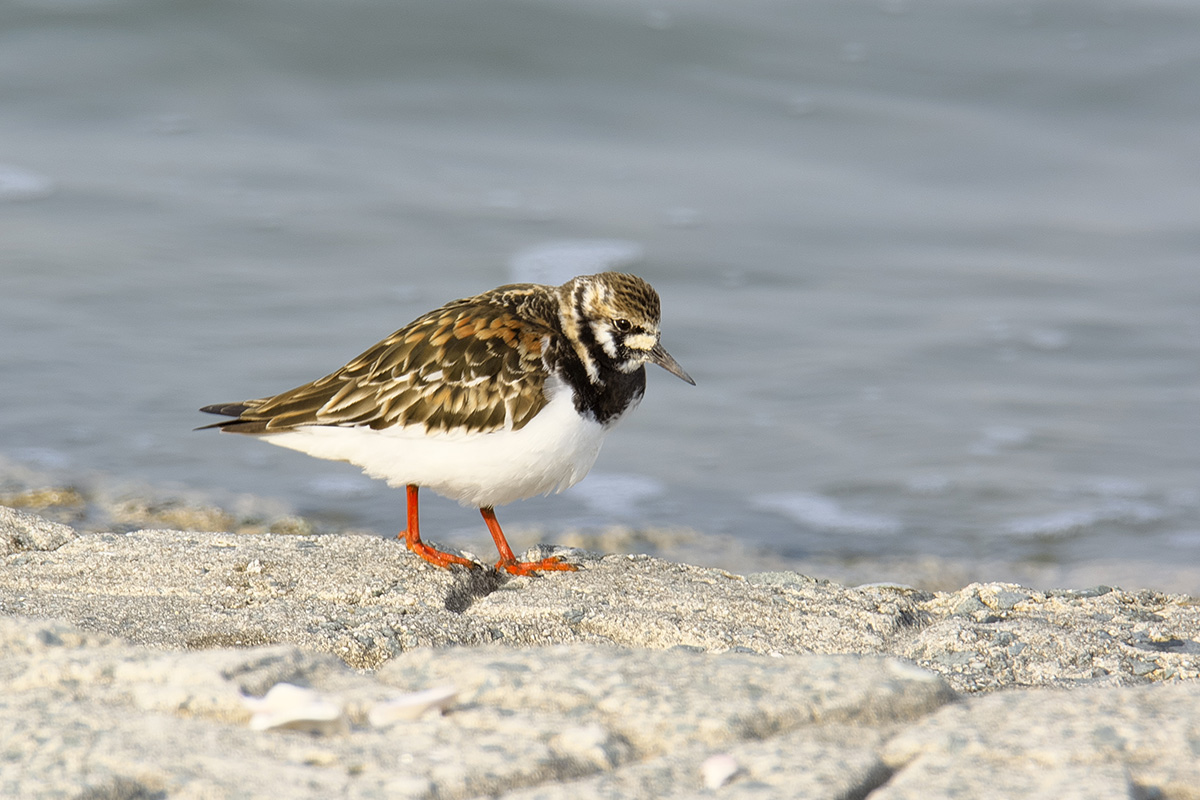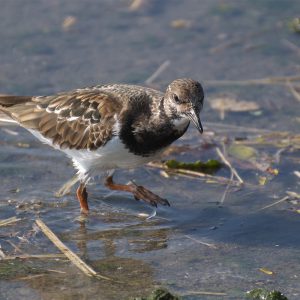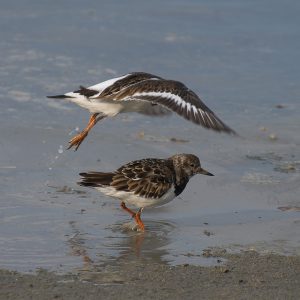むなかたが集まる
電子データベース
電子データベース
キョウジョシギ

| 種目 | キョウジョシギ (京女鷸) | 分類 |
チドリ目 シギ科 キョウジョシギ属 |
学名 | Arenaria interpres | 英名 | Ruddy Turnstone |
|---|---|---|---|---|---|---|---|
|
キョウジョシギ (京女鷸) |
チドリ目 シギ科 キョウジョシギ属 |
Arenaria interpres | Ruddy Turnstone |
宗像市でみられる場所・時期
宗像では旅鳥で,春秋の渡りの時期(4月から5月,9月から10月)に稀に見ることができる。島嶼や,海岸で観察できるが,稀にしか見ることができない。
特徴
全長22㎝。雌雄ほぼ同色である。顔から胸が特徴的な白黒模様となる。
雄夏羽は,頭部が白く,黒い縦斑があり,上面は茶色,黒,白の斑模様を示す。嘴は黒くて短小で,やや反っている。
雌は,雄に比較して上面の赤みが弱く,頭部は褐色で,足は橙色である。
冬羽は,上面が暗褐色で赤みが無い。
習性
旅鳥として,海岸の砂浜,岩場など,干潟,河口,河川,水田で生息する。数羽か小群での行動が多く,水辺や岩場を活発に歩き回り,小石や木片,回想などをひっくり返し,岩の隙間などから甲殻類や昆虫類などを捕食する。このような行動が英語名のTurn Stone (石をひっくり返す。)の由来となった。
分布
日本では旅鳥で少数が越冬する。世界的に見ると,北極海沿岸で繁殖し,バルト海・北海の沿岸,アフリカ大陸沿岸,アラビア半島沿岸,インド洋沿岸,オーストラリア沿岸,インドネシア一帯の島しょ沿岸,南シナ海沿岸などで越冬する。
その他
模様が美しく派手なことから,京女にたとえられ,漢字名の「京女鷸」とされたという。
 はじめに
はじめに お問い合わせ
お問い合わせ
